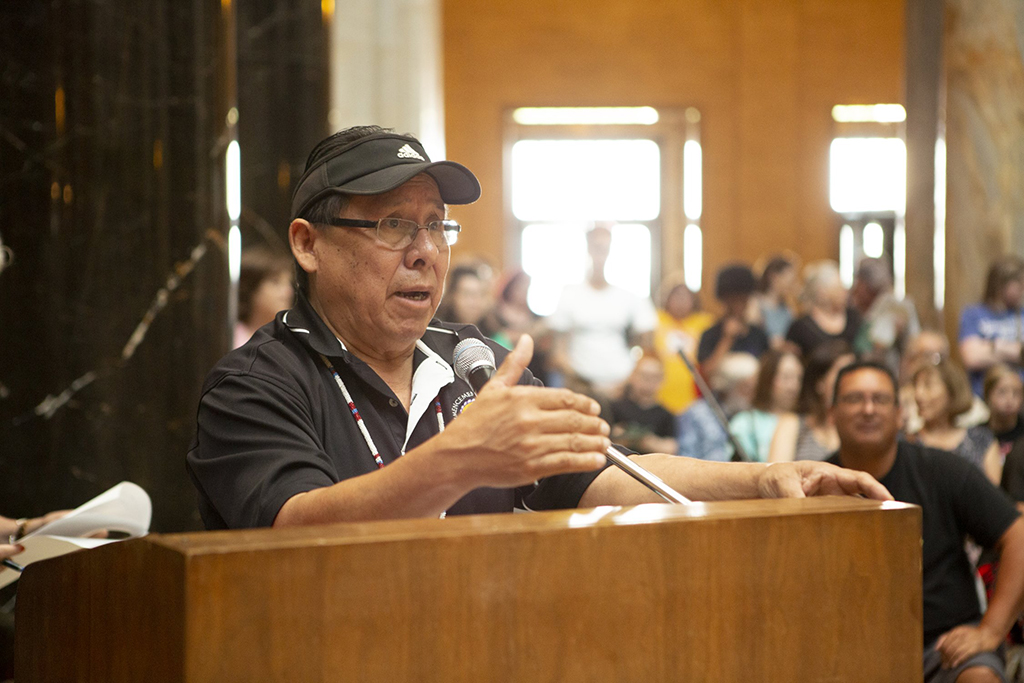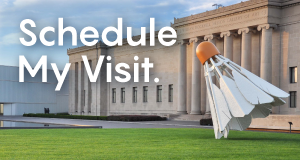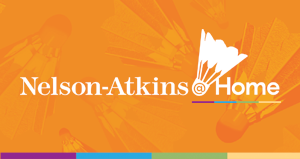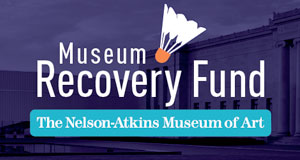Land Acknowledgment (in development)
The Nelson-Atkins Museum of Art stands on the homelands of Native American peoples, at the juncture of the Missouri and Kansas Rivers. In recent years, these nations have included the Missouria, Oto, Kansa, Osage, Shawnee, and Delaware. We pay respects to all Indigenous peoples — past, present, and future — for their continuing presence in the homeland and throughout the Native American diaspora.
Our Process
Land Acknowledgments formally recognize, honor, and give thanks to the Native caretakers and residents of a region, as well as their ancestors and future generations. They counter the erasure of Native peoples by honoring Tribal histories and drawing attention to Tribes’ traditional lifeways and enduring spiritual connections to the land. The Nelson-Atkins Museum of Art is in the process of revisiting our Land Acknowledgment to create an inclusive, collaborative, and accurate statement that centers the voices of Indigenous peoples.
We are partnering with a multitribal Native American advisory group to create a statement that represents the perspectives of the Native American peoples whose ancestors made their homes on the land around the museum. It is our greatest honor to learn from the diverse perspectives of our Native American partners throughout this process. We recognize that true acknowledgment is a collaborative learning process that never ends, and we see this acknowledgment as one step in that journey.
The story of who lived on and moved through this land differs depending on the sources consulted. The Nelson-Atkins is foregrounding Indigenous knowledge, such as stories and oral histories, recognizing that Euro-American knowledge systems are often biased, incomplete, and exclusionary.
As an art museum with a commitment to the public display of Native American arts, we recognize that some Indigenous peoples consider works in the collection to be living relatives. We celebrate the ongoing vitality of Native American art by collecting works by contemporary artists, elevating the manifold voices of Native peoples today. We are honored to continue engaging Native peoples on questions around display and interpretation of the Native American collection.

Where We Are
Different Indigenous communities have been connected to the land now called Kansas City for thousands of years. While some made their homes here, the U.S. government also forced dozens of Native American communities through the area, relocating Eastern tribes into Missouri from 1803-1830 and then driving communities further West with the Indian Removal Act of 1830. The land the Nelson-Atkins occupies was first ceded to the U.S. government by the Great and Little Osage tribes in 1825 in Cession #123. The peoples who have lived and moved through this land in the past couple hundred years include:
- Delaware Nation
- Ioway Tribe of Kansas and Nebraska
- Kaw Nation
- Oceti Sakowin
- Otoe-Missouria Tribe
- Prairie Band Potowatomi Nation
- Osage Nation
- Sac and Fox Nation of Missouri & Kansas
- Shawnee Tribe
- Wyandot Nation of Kansas
- Wyandotte Nation
Your Voice
We invite Native and non-Native voices alike to provide feedback, questions, and thoughts about the Nelson-Atkins Land Acknowledgment process. Whose stories are we missing? What do you think a museum’s Land Acknowledgment should include? Send your response to LandAcknowledgment@nelson-atkins.org.


